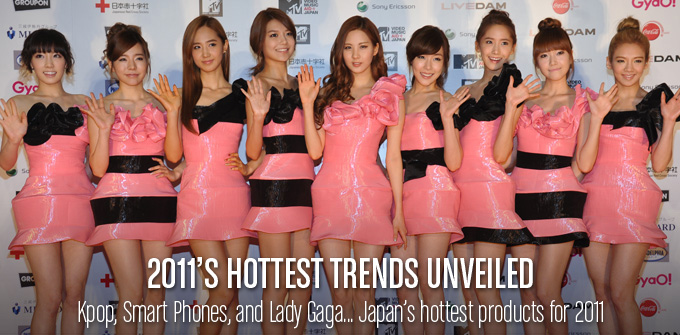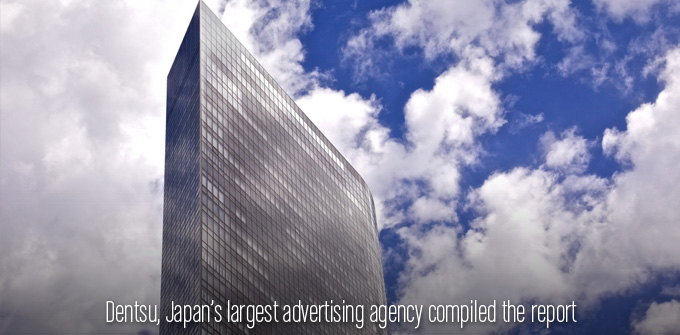Dentsu Inc. Japan’s largest advertising and branding agency announced today the release of its “2011 Hit Products in Japan” report.
Produced as part of a series that has been chronicling hit products since 1985, the latest report examines and generalizes major trends that represented the “consumer mindset” in 2011.
It is based on an Internet survey of Japanese consumers carried out in November 2011 by Dentsu Innovation Institute (DII).
The following top 20 products (including some popular content and social phenomena) were selected by the Internet survey respondents from approximately 130 popular items.
The total scores in three categories: “recognition,” “have/had interest” and “is/was popular” – were calculated to determine the top products of 2011. The figures in parentheses are last year’s rankings.
Previously unranked products are indicated with (-).
The proliferation of smartphones is continuing, and this product once again ranked No. 1.
While information tools such as smartphones and tablets along with social media services such as Twitter rank in the top 20, the impact of the Great East Japan Earthquake which occurred on March 11 can be seen in the No. 2 ranking for LED light bulbs and the first-time appearance of several energy-saving and eco-friendly products.
The high rankings for Tokyo Sky Tree, Nadeshiko Japan and AKB48 can be attributed to the way in which they lifted a weary nation’s spirits.
2011 Hit Products in Japan
No. 1: Smartphones (1)
No. 2: LED light bulbs (10)
No. 3: Tokyo Sky Tree (new broadcasting tower scheduled to be completed in the spring of 2012) (7)
No. 4: Nadeshiko Japan (the Japan women’s national football team who won the 2011 FIFA Women’s World Cup Germany (TM) tournament) (-)
No. 5: AKB48 (48-member all-girl theater/idol group with its own theater in Akihabara, Tokyo) (18)
No. 6: Mana Ashida (a seven-year-old child actress, model, singer and celebrity) (-)
No. 7: Hybrid vehicles (16)
No. 8: Disaster prevention supplies and emergency food supplies (purchased in the aftermath of the Great East Japan Earthquake) (-)
No. 9: Electric and battery-powered fans (although most Japanese homes are equipped with air conditioners, many families bought and used electric or battery-powered fans instead to conserve energy in the aftermath of the Great East Japan Earthquake) (-)
No. 10: Digital broadcasting-equipped widescreen flat-panel TVs (4)
No. 11: Munchable (chunky) chili oil (3)
No. 12: Energy-saving home appliances (-)
No. 13: Lady Gaga (-)
No. 14: Automatic bread makers (-)
No. 15: Tablet information devices (tablets) (19)
No. 16: B-grade local gourmet food (term used for inexpensive local food eaten in a casual setting; A-grade refers to expensive gourmet food eaten in a formal setting.) (11)
No. 17: Steve Jobs (-)
No. 18: Twitter and other microblogging platforms (2)
No. 19: Electric cars (-)
No. 20: K-pop music groups (Girls’ Generation, Kara and other Korean groups – pictured above) (-)
So what do you think? email us with your thoughts or comment below!
Email: [email protected]
External Link:
Dentsu Inc. homepage









